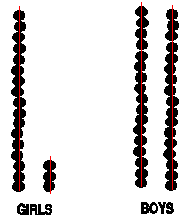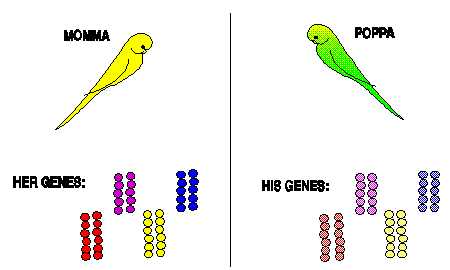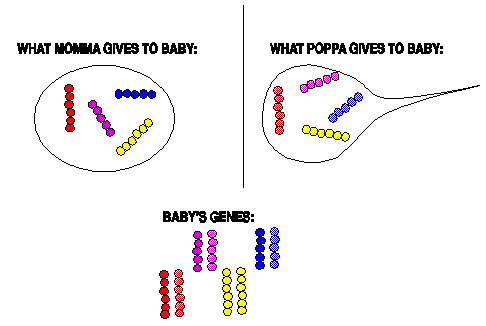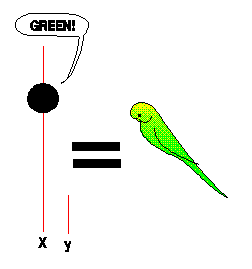
In birds, the females have one regular length sex chromosome and one of the short ones. Males have a pair of the regular-length ones.

But that's only in the girls. The boy birds have two X chromosomes that have to argue it out like always. It's just the girl birds who get a break, and only on that one chromosome pair. But it's REALLY useful to know which genes live on that X chromosome!

Cinnamon is when the (normally black) markings on the bird are brown instead of black. Opaline is when those markings are on the bird's wings, but not on the head or back.
In cockatiels, the genes for ino, cinnamon, and pearl are on the X chromosome. (We will use budgies for our examples, though.)
So what? Ok, let's see what happens if a female bird has one gene for lutino: there's no gene to disagree with it, and so the lutino gene wins. So if a female HAS a lutino gene, you will see she's lutino.

The same thing goes for cinnamon and opaline.
When people argue, we say they are split on an issue. When a pair of genes disagree with each other, we say the bird is "split". In the example above, the poppa with one lutino gene and one green gene is "split to lutino".
So how does a baby bird get its genes? (This is why the chromosomes come in pairs.) To make a baby, the parents' chromosome pairs split up. Momma gives the baby one chromosome from each pair. Poppa give the baby one chromosome from each of his pairs. That makes the new pairs of chromosomes in Baby.


Now, lets look at those sex chromosomes again. Momma bird has to give one of her pair of sex chromosomes to Baby. Which one? She can give Baby the long one or the short one. Poppa bird has two long X chromosomes. So whichever one Poppa gives, it will be long. If Momma also gives an X chromosome, Baby will have two long ones. Gee... that would make him a boy. If Momma gives the short chromosome, then Baby will have one long and one short, so she'll be a girl.



Now suppose it's breeding time and Poppa is giving out his X chromosomes to his kids. Sometime babies will receive a lutino gene and some won't. Then Momma gives them another X chromosome and they become boys, or she gives them a little short chromosome and they become girls. (Hey, can we call that little short chromosome a "y" chromosome? It's quicker than always having to type "little short chromosome").
If Momma is green, that means the gene on her X chromosome is like this:





Remember that in budgies, the cinnamon and opaline genes behave exactly the same way as the lutino gene:
Cinnamon daughters only get a cinnamon gene from their dads.
Two non-cinnamon parents can still create a cinnamon daughter if the dad has one cinnamon gene.
Opaline daughters only get an opaline gene from their dads.
Two non-opaline parents can still create an opaline daughter if the dad has one opaline gene.
